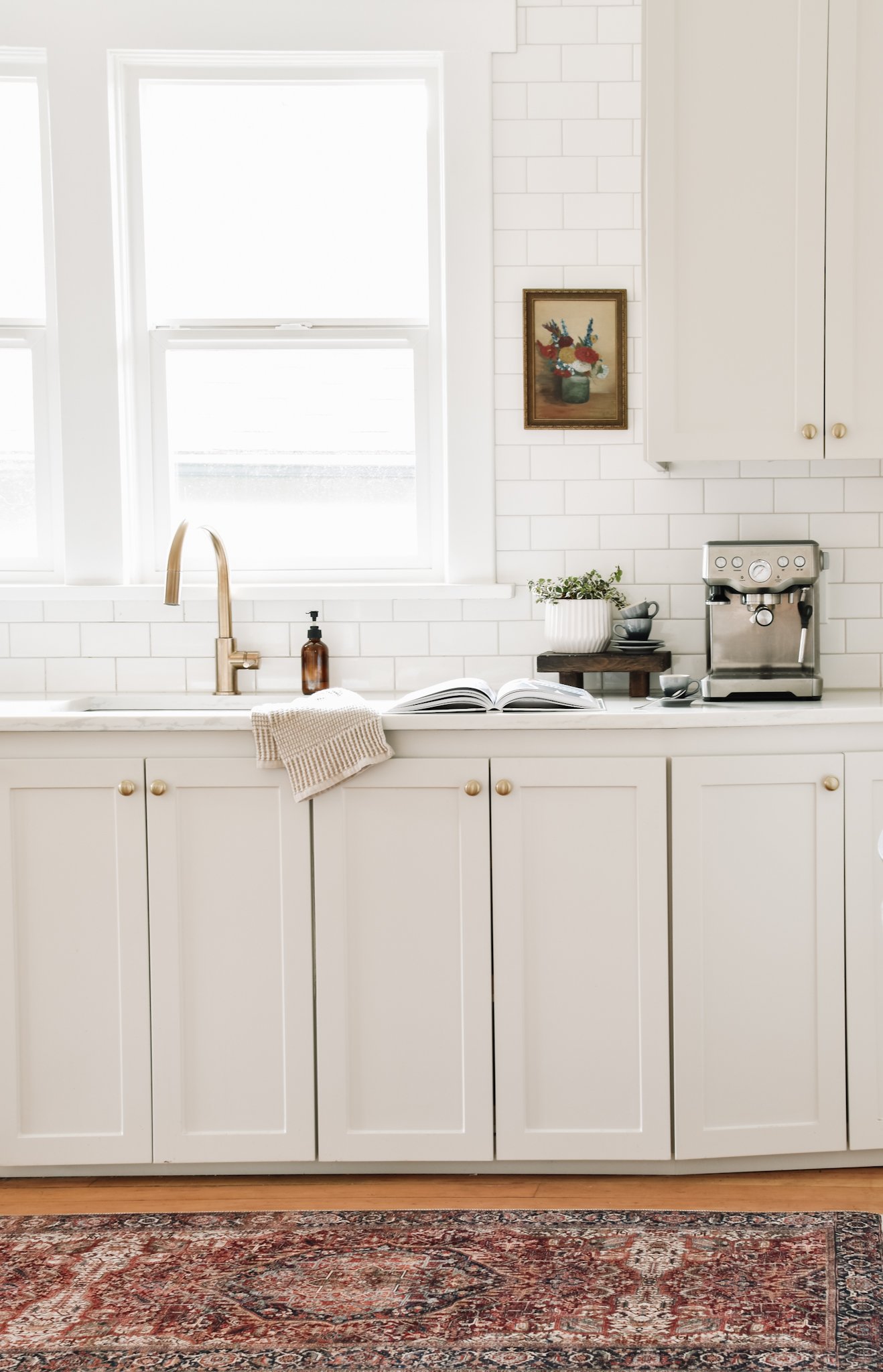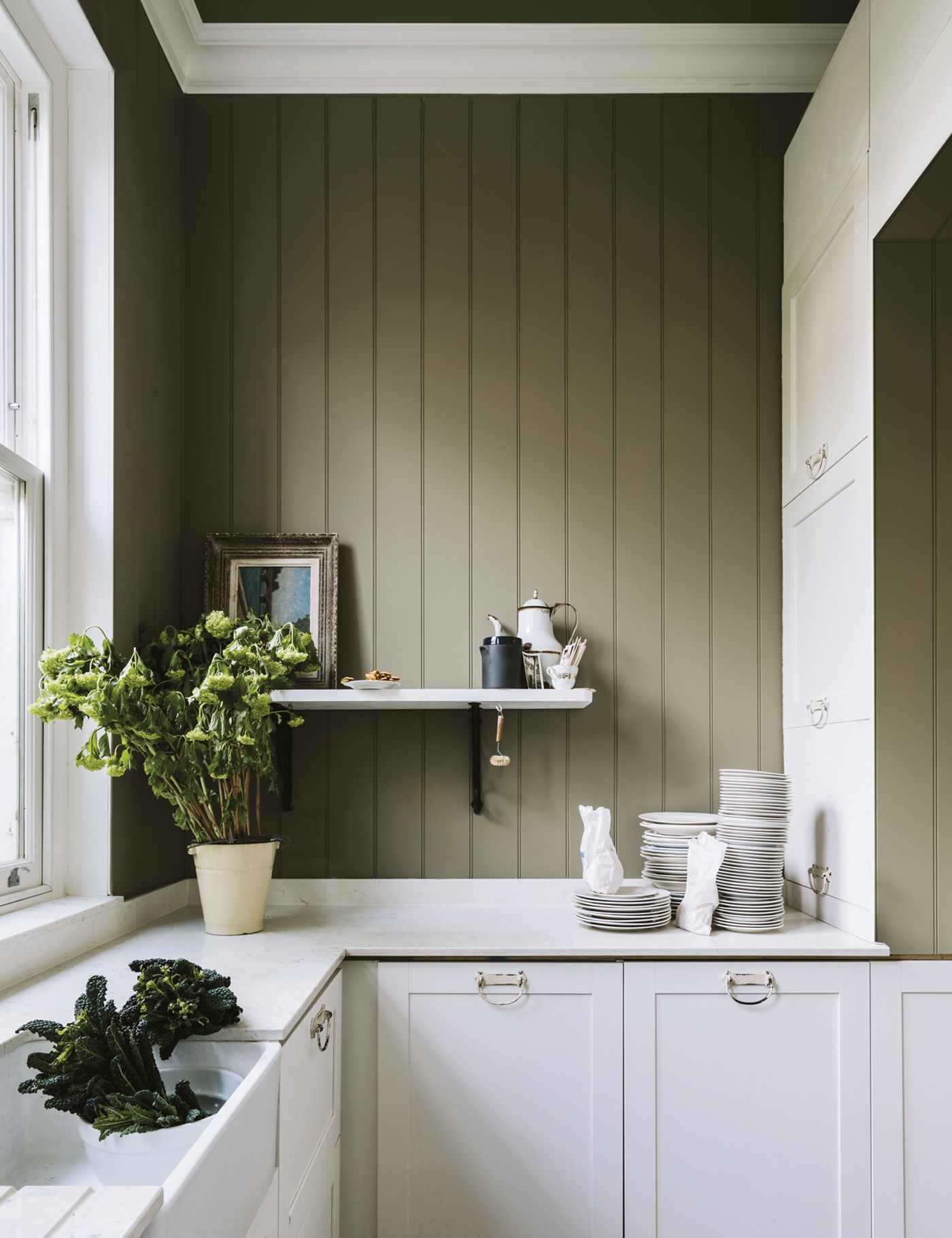Flat, Semi-Gloss, Matte, Eggshell, Pearl, Satin, Gloss – there are enough paint sheen options to make your head spin.
From lowest to highest sheen, I’m breaking down the difference between them, when & where to use each, and my preferred combination of paint sheens.

This post may contain affiliate links, and I may earn a small commission at no additional cost to you. As an Amazon Associate I earn on qualifying purchases. You can read my full disclosure here.
PAINT SHEEN GUIDE
So why does paint sheen matter? Aside from effecting the colour of the paint – the higher the gloss, the lighter the colour appears to the eye (because it reflects more light), sheen also effects how the paint performs. Flatter sheens are less durable and washable that shinier finishes.
FLAT
This one is pretty self-explanatory – it’s the flattest sheen, which means no shine whatsoever. It disguises imperfections in surfaces, which is why its ideal for ceilings.
On the flip side, the paint has an almost-chalky feel which means it grabs dirt and has almost zero scrubability.
Uses: Ceilings
MATTE
Matte gives an almost-flat appearance to walls, with a very low-lustre, luxe finish. The matte finish provides added scrubbability over a flat finish, but less so than an eggshell or pearl paint. This is my personal favourite sheen for walls.
Something about a matte finish just feels more current and high-end.
Uses: low-traffic interior walls

EGGSHELL
Eggshell sheen could be considered the “standard” wall sheen & it certainly is the most popular choice. You can expect a velvety, softly polished glow with an easy-to-clean surface.
You can expect to see some light reflection at certain angles, so if that’s not the look you are after, I’d recommend matte finish instead.
Uses: interior walls, hallways, bathrooms & kitchens
PEARL/SATIN
Pearl and Satin are basically interchangeable, with some brands naming it Pearl and others Satin. As the middle of the sheen spectrum, this is the first finish where you really see substantial light reflection from the surface. It truly does give off a beautiful, subtle, very pearl-like finish, without being shiny. As it creates a smooth, less porous surface, it’s cleans up easily from any dirt, grime, or little finger prints (ask me how I know).
Uses: High-traffic areas such as mudrooms; interior moldings and casings; bathrooms and kitchens; cabinetry (I recommend Benjamin Moore Advance Paint or Sherwin-Williams Emerald Enamel for cabinetry).

SEMI-GLOSS
Semi-gloss gives a slick and radiant finish, and would be considered the standard sheen for moulding and casings. It’s super durable and scrubbable, making it perfect for high-traffic areas.
Uses: Interior moldings and casings
GLOSS
Gloss sheen provides a brilliant glass-like finish for a dramatic look & exceptional durability.
Uses: Interior moldings and casings

MY RECOMMENDED FINISHES
After years of painting and many, many rooms painted (and repainted), I’ve narrowed down my combo of ideal finishes: matte for walls, satin for trim, and flat for ceilings. Overall I prefer a slightly less shiny finish than the “standard” sheen choices, which is why I’ve chosen this combination.
Now this is my preference, one I’d recommend over and over; however you may prefer a more glossy finish (say eggshell for walls and semi-gloss or even gloss for trim) and I say go for it! Your home, your rules.
Hopefully this clears up any confusion on paint sheens. Any questions? Feel free to leave them in the comments below!

